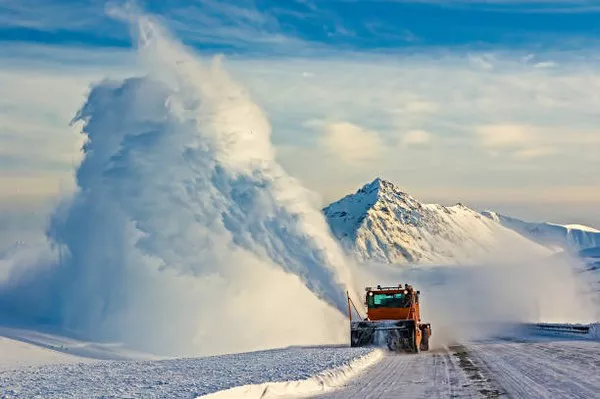As winter approaches, the need for efficient snow removal becomes a top priority for many homeowners. Investing in a reliable snow blower can make the daunting task of clearing snow-covered driveways and walkways much more manageable. However, with various options available on the market, choosing the right snow blower requires careful consideration of several factors. In this article, we will explore five crucial things to keep in mind when purchasing a snow blower to ensure you make an informed decision that meets your specific needs.
Snow Blower Types and Size
The first and foremost consideration when buying a snow blower is determining the type and size that suits your requirements. There are three main types of snow blowers: single-stage, two-stage, and three-stage.
Single-stage snow blowers: Ideal for light to moderate snowfall, these compact machines are easy to handle and maneuver. They are best suited for paved surfaces and are less expensive than their counterparts.
Two-stage snow blowers: Designed for heavier snowfall and larger areas, two-stage snow blowers use an auger to collect snow and an impeller to discharge it. They are suitable for both paved and unpaved surfaces and are more powerful than single-stage blowers.
Three-stage snow blowers: The most powerful option, three-stage snow blowers are suitable for heavy snowfall and large areas. They come equipped with an additional accelerator that breaks down ice and snow before the auger and impeller move it.
Additionally, consider the clearing width of the snow blower, which determines the swath of snow it can handle in a single pass. A wider clearing width reduces the number of passes required, saving time and effort.
Power Source: Gas or Electric
Another critical factor to consider is the power source of the snow blower. Both gas-powered and electric snow blowers have their advantages and drawbacks.
Gas-powered snow blowers: These machines are known for their robust performance and are suitable for large areas with heavy snowfall. They offer greater mobility since they are not tethered to a power source. However, gas-powered snow blowers require regular maintenance, fuel, and may produce more noise and emissions.
Electric snow blowers: Environmentally friendly and easy to maintain, electric snow blowers are well-suited for smaller areas with moderate snowfall. They are quieter, lighter, and do not require fuel or oil changes. However, their range is limited by the length of the power cord or battery life, making them less suitable for larger properties.
Consider the size of the area you need to clear and the convenience of maintenance when choosing between gas and electric snow blowers.
Terrain and Surface Type
The type of surface you intend to clear plays a crucial role in selecting the right snow blower. Different models are designed for specific terrains, and using the wrong type can lead to inefficient snow removal and potential damage.
Paved surfaces: For driveways and walkways with smooth, paved surfaces, any type of snow blower can be suitable. Single-stage and electric models are often preferred for their ease of use and maneuverability.
Gravel or uneven surfaces: If you have a gravel driveway or uneven terrain, it’s essential to choose a snow blower with adjustable skid shoes to prevent damage to the surface. Two-stage or three-stage models with larger wheels are better suited for handling such conditions.
Considering the specific features designed for the type of surface you’ll be clearing ensures efficient snow removal without causing harm to your property.
Ease of Use and Maneuverability
Snow removal can be a physically demanding task, and choosing a snow blower that is easy to use and maneuver can significantly enhance your experience. Look for features that contribute to user-friendly operation:
Adjustable handles: Ensure the snow blower has adjustable handles to accommodate users of different heights, reducing strain on your back and shoulders.
Easy chute controls: Choose a model with convenient controls for adjusting the direction and height of the snow discharge chute. This feature allows you to direct snow away from driveways and walkways easily.
Self-propelled options: Many two-stage and three-stage snow blowers come with self-propelled features, reducing the effort required to move the machine through heavy snow.
Investing in a snow blower with user-friendly features not only makes snow removal more comfortable but also enhances the overall efficiency of the machine.
Additional Features and Accessories
Finally, consider any additional features or accessories that can enhance the performance and versatility of your snow blower:
Heated handles: Some models come equipped with heated handles to keep your hands warm during extended use in cold weather.
Headlights: For those who may need to clear snow in low-light
conditions, a snow blower with built-in headlights provides increased visibility and safety.
Electric start: Opt for a snow blower with an electric start option, especially in extremely cold weather, as it eliminates the need for manual pulling to start the engine.
Track or wheel drive: Depending on the snow conditions and terrain, choose between track and wheel drive options. Tracks provide better traction on uneven surfaces, while wheels are suitable for smoother, paved areas.
See Also Can You Flood a Snowblower?
Conclusion
Selecting the right snow blower involves a thoughtful evaluation of your specific needs and the unique features of the available models. By considering the type and size of the snow blower, power source, terrain and surface type, ease of use, and additional features, you can make an informed decision that ensures efficient snow removal and meets your expectations. Winter can be challenging, but with the right snow blower, you can transform a laborious task into a manageable and even satisfying winter chore.

